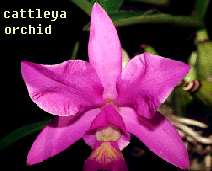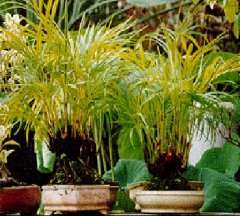The Indonesian Bonsai Association
- Perkumpulan Penggemar Bonsai Indonesia (PPBI)
The PPBI was established in Jakarta in 1979 and since then has been growing steadily. It now has over 42 chapters spread throughout the country with more that 2500 members and holds regular member and chapter meetings as well as local and national exhibitions. There are quite a number of plant species that are used for Bonsai in Indonesia click on this link for more details. The PPBI also has a Suiseki Division which actively collects and displays local Suiseki.

You can contact the PPBI through
Budi Sulistyo
Kembang Harum Utama C II/12 Puri Indah,
Jakarta 11610, Indonesia
Ph: 6281181046,
Email: budisulistyo@yahoo.com
Indonesian Bonsai Show May 2001 at Semarang
Here are some of the most outstanding photos of Bonsai from 467 trees which participated the national exhibition held in May 2001 at Semarang.
Indonesian Bonsai Exhibition '99 - exhibition Photo's and contact details
Bonsai Centres in Indonesia
Pluit Bonsai Center - Jakarta
Considered as the largest Bonsai centre Pluit has 47 Bonsai artists who display and offer local species for sale. This is the gathering place for many collectors and Bonsai artists to exchange knowledge and ideas as well as to discuss the organization activities.
Located at Jl. Taman Pluit Putra Putri, Jakarta Utara, near Jakarta bay close to the old harbour of Batavia.
Batu, Malang - East Java
Known as the city of the apple, Batu has become one of the important supply sources for Bonsai in Indonesia. In about 10 ha there are more that 25 Bonsai nurseries and farms with some nurseries exporting products overseas.
Located in East Java about 19 km west of Malang (about 2 hrs drive from Surabaya)
Puncak - West Java
The Bonsai in Puncak has its own specific style, normally very simple and sold at a reasonable price. Along the curving roadside there are many Bonsai nurseries that have collected and cultivated material, and pieces with good future potential can often be found.
Papandayan Volcano - On the lower slopes the road which climbs high up the volcano is lined with Bonsai and other colourful plant stalls.
Located about 80 km south of Jakarta after passing through Bogor city.
Bonsai Nurseries in Indonesia - a list of Bonsai nurseries and contact details in Indonesia
List of Plant Species used for Bonsai in Indonesia
Back to Top
Bonsai in Bali

You may be surprised to find out that there are Bonsai in Bali and although they may be difficult to find they are well worth the visit. The first step is to find a "bemo" driver who understands exactly what you are looking for. Then trying to locate them is another problem as the streets are seldom named and I don't think they have heard of numbers, but this is part of the fun of it. Most of the nurseries are located in Sanur close to one of the main tourist areas.
Many of the trees are collected, and are quite large and impressive, and some of the nurseries quite large. If you are limited for time a must is Sanur Tropical Bonsai they have about 2000 Bonsai many of these are collected from rocky beach areas. Ceramic pots are rare as they are too expensive for the locals to buy. Some of the nurseries make there own pots from cement or buy them from a town called Kapal (this is the only town that has artisans that make them).
Click here for more information about Bonsai in Bali, a list of Bonsai nurseries in Bali and Map
also a great slide show of some of the Bonsai you will see in Bali.
Back to Top
Suiseki in Indonesia - Indonesian Suiseki Association
There is an Indonesian Suiseki Association, I have very little about this association but you may be able to make contact through the Soemarko link. The following article appears to be about Suiseki and is in Indonesian.
Suiseki, Batu yang Indah - Surabaya Post
Suiseki, batu yang secara alamiah memiliki keindahan bentuk, merupakan seni kuno Asia Timur yang dalam dasawarsa terakhir makin merambah ke berbagai penjuru dunia, termasuk Indonesia

Soemarko - Akok
Retailer of Suiseki, stones, fossils, gems & handicrafts and is a member of the Indonesian Suiseki Association. Office and Show Room: Desa Bojong Nangka, Kecamatan Legok, Kabupaten Tangerang, Propinsi Jawa Barat , Indonesia. Ph: (62-21) 5469275, 54200259, 54200260 Fax: (62-21) 5469276 email: soemarko@suiseki.co.id
Back to Top
Indonesian Parks and Gardens
The most common form of the traditional Indonesian private garden, the so-called "pekarangan", differs considerably from that familiar to the West. Still found in its old form mainly in rural areas, this type of garden usually grows fruit, medical herb and other useful plants such as bamboo. It is often marked off from neighboring lots by low hedges or bamboo fences but seldom entirely enclosed for privacy. Closer to the conventional eastern concept of a garden and of greater interest aesthetically, is the big "pelataran" garden which surrounds the homes of the aristocracy and other members of the social elite in Java. Usually covered with carefully brushed river sand and shaded by tall cinnamon trees, these aristocratic gardens exhume an air of quiet dignity and bear a character all their own. Similar in concept to the "pelataran" is the alun-alun, the traditional town square, usually found in front of the ruling royal or princely house, or the highest local government administrator, the Bupati. Western influence has to a certain extent pushed aside the old traditional concept and nowadays most town gardens and all parks apart from the alun-alun are more, or entirely, a realization of the modern western concept. A further development has been the establishment of national and tourist parks for the purpose of conservation, research and recreation in many parts of the country.
Bogor Botanical Garden - another link to Bogor Garden in Indonesian

The Bogor Botanic Gardens - The most renowned of public gardens and one which has won international acclaim, 60 km south of Jakarta. Laid out initially at the orders of the British Lieutenant Governor Sir Thomas Stamford Raffles with the help of experts from the Kew Gardens, the Bogor Botanic Gardens were inaugurated in 1817. It covers an area of 217.5 acres and has a collection of more than 15,000 native and foreign plant species, including orchids and the giant Rafflesiawhich blooms only once a year. Editors note: I have seen reference to a shop selling Suiseki in Bogor, more details of this would be appreciated.
The Cibodas Mountain Garden
- Founded in 1862 for the study of mountain flora and fauna, it covers an area of about 200 acres at an elevation of 1,200 meters on the slope of the Gede volcano, West Java. Attached to this garden is a forest reserve of more than 3,000 acres extending up to the summit of Mt. Pangrango and the crater of Mt. Gede, east of Bogor. The Cibodas collection includes imports from a number of sub-tropical countries.
The Purwodadi Garden
- This garden in East Java was founded in 1914 for the study of plants growing under relatively dry climatic conditions. It is situated on the lower slopes of Mt. Arjuna at an altitude of about 3,000 m and covers an area of 212.5 acres.
The Eka Karya Garden
- Founded in 1959 for the study of the mountain flora of West Nusa Tenggara (The western part of the Lesser Sunda Islands). Located at Candi Kuning on the slopes of Mt. Pohen in Bali, it covers an area of 125 acres at an altitude ranging from 1,250 to 1,450 m above sea-level.
The Sibolangit Garden
- This North Sumatra garden was founded in 1974 and is situated at Sibolangit on the slopes of the volcano Sibayak at an altitude of about 500 m, it covers an area of 50 acres and has a forest reserve of about 100 hectares with an altitude of between 300 and 550 m.
The Setia Mulia Garden
- Founded in 1955 at Padangtinggi on the slopes of the Bukit Barisan mountain range in West Sumatra. It covers an area of 150 acres at an elevation of 350 to 900 m.
Orchid Gardens
- Apart from those in the Bogor Botanic Gardens, which serve a mainly scientific and experimental purpose, commercial orchid gardens are found in Jakarta at Slipi and in the Taman Mini Park. Indonesia produces some of the most exotic orchid species, including the black-orchid (bualagna pandurata) which grows in the Kersik Luway reserve of East Kalimantan.
Back to Top
Taman Bunga Nusantara Flower Park - 60 km south of Jakarta
The park was set up by the Nusantara Flower Foundation to display flowers from all over the world and to educate the public about the beauty and the use of flowering plants in garden design. Now covering 35 ha, the park has an outstanding collection of flowering plants from around the globe, showcasing blooms from North and South America, Australia, Europe and Africa. In the five other specialty gardens, including the Rose garden, there is no hint of the tropics. The Japanese, Mediterranean, French and American gardens, all display not only plants, but also traditional garden designs, from those regions. Editors note: I am led to believe that there is a Bonsai Garden and Exhibition at Nusantara, confirmation of this would be appreciated.

Taman Mini Indonesia Indah
Indonesia in Miniature Park & Orchid Gardens - Jakarta
One of the most interesting tourist attractions is the "Beautiful Indonesia in Miniature Park" popularly called "Taman Mini". Built to portray the variety of cultures found within the many islands contained in the Republic of Indonesia, it represents Indonesia's 27 provinces and their outstanding characteristics reflected most strikingly in the exact regional architecture of the province. It has its own orchid garden in which hundreds of Indonesian orchid varieties are grown. There is also a bird park with a walk-in aviary with about 600 bird species native to Indonesia, a fauna museum and recreational grounds.
Open from 9.00 a.m. to 4.00 p.m. daily.
This link to Taman Mini Indonesia Indah in Indonesian
Back to Top
Bonsai Palms of Indonesia by David F. Schwartz


Dr. Dransfield told me that there is a tradition in Indonesia of pot-growing clustering palms. Apparently, Calamus ciliaris can look very pretty when its aerial stems are pruned back. His favorite bonsai palm, however, is Dypsis lutescens. When grown well, it produces dwarfed fronds, slender short stems and very dense clustering. He also informed me that Dick Douglas, ex president of IPS, used to have some handsome dwarfed Trachycarpus fortunei (the form normally called T. wagnerianus) growing in bonsai pots, with very tiny leaves. This was part of an article by David F. Schwartz, you can read the whole article by clicking the above link. Editors note: I am told that these palms are not considered as Bonsai in Indonesia, just a
decorative potted plant, when I was in Bali I did see what looked like Golden Cane Palms (photo on right) in small pots.
Back to Top
Useful information about Bonsai in Indonesia - other visitors experiences
Lombang (known to us for its beach) but apparently famous to the locals for its Bonsai trees.
The lonely Planet - Very good online guide on Indonesia
Traveling in Indonesia - Comprehensive Site on Indonesia













